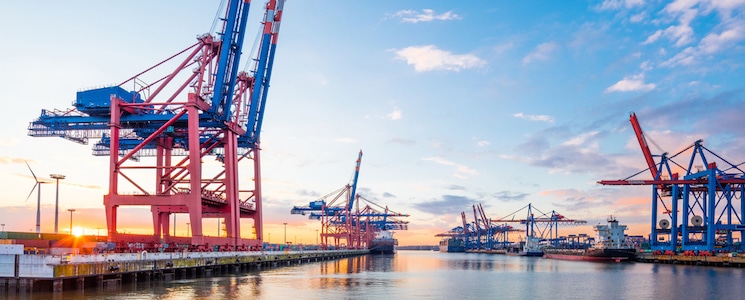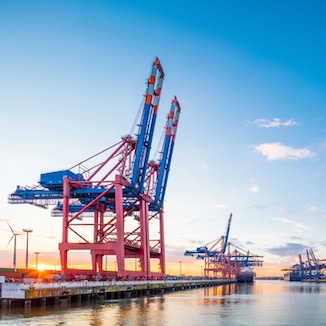
As we mark the halfway point through 2020, it certainly has been a year of disruption, extreme challenge, and rapid change. Technology has played a central role in solving issues, creating new opportunities, and accelerating the rate of change that is now possible. And, most importantly, increasing the efficiency of communications on a global scale. Given the current global political and economic conditions, technology now appears poised to drive more manufacturing activity back to the U.S. and other industrialized nations.
It is no secret the importance of technology in how we live our lives and operate our businesses. This impact is only getting stronger and more pervasive. According to statistics released by the Bureau of Economic Analysis, the digital economy accounted for 6.9 percent of the U.S. gross domestic product, or $1.35 trillion, in 2017. During this same period, the digital economy supported 5.1 million jobs, which accounted for 3.3 percent of total U.S. employment of 152.1 million jobs. I expect these figures to continue on their growth trajectory.
Technology’s Impact on Manufacturing
The Fourth Industrial Revolution brought the Internet to manufacturing, providing new access and visibility to intelligence data that is driving new levels of smart manufacturing and greater productivity to the shop floor. Industry pundits are quick to point to the future growth potential of Artificial Intelligence (AI), digital platforms and ecosystems, as well as new digital products and services.
But technology does not make change. Rather, it is an enabler of change. Disruptive events occur. People working at companies do the best they can to adapt, which then drives innovation and change. We see this today with the coronavirus. What emerges from today’s disruptions is likely be a few long-lasting impacts that might surprise you.
Adaptation in the World of COVID-19
If I had asked you to predict a growth industry for 2020 just six months ago, I doubt acrylic glass or plexiglass would have been in your top 50. Today this industry is white-hot. As outlined in this Forbes article, Ohio-based Plaskolite experienced a huge surge in orders as the coronavirus pandemic gained momentum in mid-March. As a company with $650 million in sales last year in a $4 billion market, they are now operating on a 24/7 basis, have ramped up production to nearly 100% of capacity, and face a backlog of nearly 15 weeks for every product they make.
Demand has gone through the roof. And, as you might expect, this surge has created big problems with how they are managing production processes and their supply chain. Many customers are new (ex: Walmart) from new industries. These clients are ordering large quantities with different product requirements and expectations.
AI and machine learning technologies are really of no help during a time of rampant change. These technologies require high volumes of data archives to systematically identify patterns and perform the necessary regression analyses to start predicting probable outcomes. This information then becomes intelligence, with an ability to trigger alerts and predictive signals. In an environment where change has been swift and almost random, the technology that is now playing a primary role in manufacturing “survivability” has been the ability to respond quickly to change.
It makes sense. We all know that if you are a “first mover,” then the competitive advantage will soon follow. Today, you need to be a “first” or “early” mover to just be in the game and capture sales. As we saw with the earlier Plaskolite example, if that company was not able to pivot quickly, all the new sales would have been lost to the competition.
Today’s focus on the digital thread helps to pivot quickly, as outlined in this article, “Weaving Digital Threads into a Digital Cloth.”
Compressing the Supply Chain
When you operate in an environment with violent change, resiliency and agility cannot work with a supply chain that delivers WIP that takes six weeks to arrive from overseas. New Product Introduction now could require components that are available in hours or days, not weeks or months.
A heightened need for operational agility coupled with a nationalistic political environment has created a compelling case to bring more manufacturing back to the U.S. and other industrialized nations. The cost advantages come with too high a price, paid for by a lack of sufficient flexibility and responsiveness to change.
Overcoming Cost Challenges
The higher cost of labor in the U.S. and other industrialized nations was an early contributing factor that first pushed manufacturing offshore. If manufacturers are going to build a compelling case to “onshore” manufacturing back home, then a cost rationalization must be made.
Here is where smart manufacturing technologies are coming of age. Manufacturers can operate with greater flexibility and responsiveness. Employees can have a greater, more direct impact on profitability while managing Lean, process improvement, and other corporate cost reduction programs. With a greater ability to control their own destiny, manufacturers are empowered to be more independent, understand what changes are possible, and implement new changes quickly.
Where do you sit in your digital transformation journey? Have you allocated more, less, or the same resources to this overall strategy? I would be interested to hear your story as well as the rationale on how that decision is impacting today’s performance.


